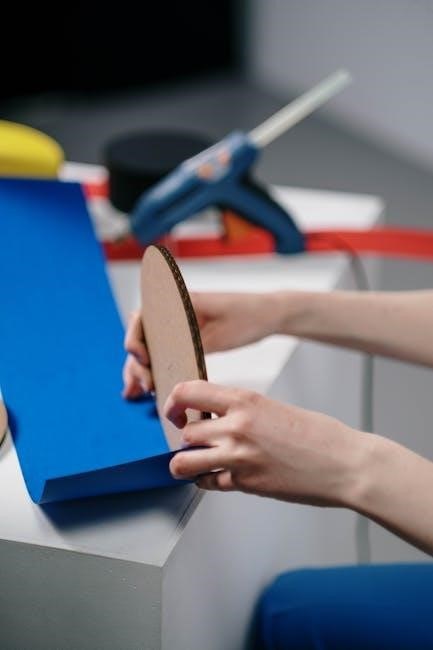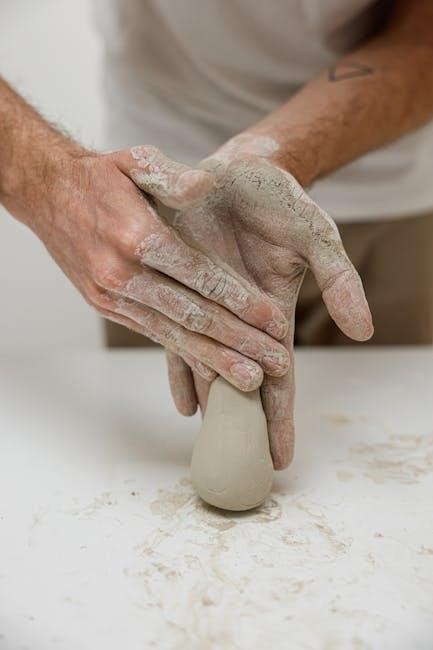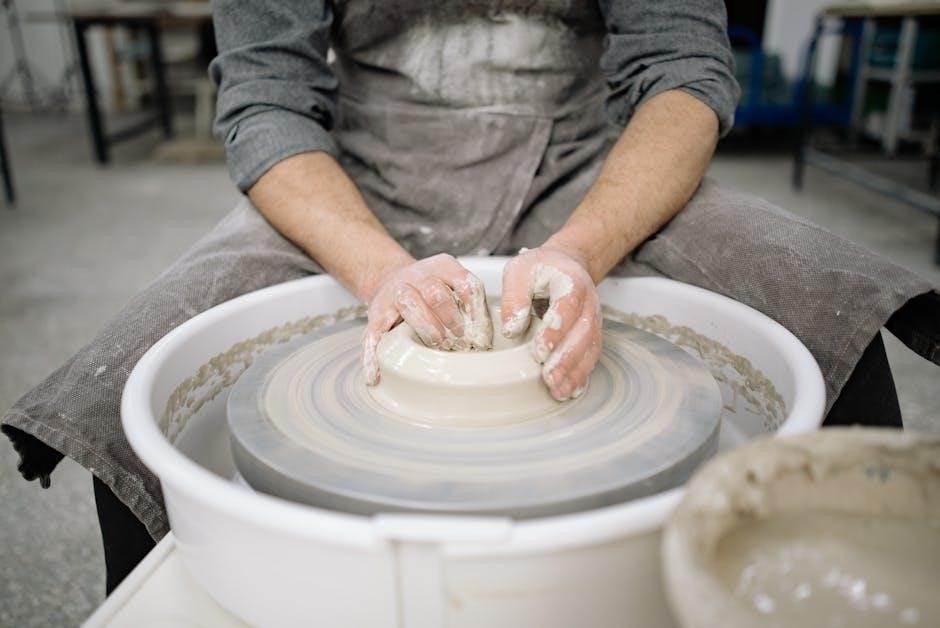West Bend Bread Maker Manual: A Comprehensive Guide
Navigating the world of homemade bread can be simplified with the right resources. This comprehensive guide aims to provide users with a clear understanding of their West Bend bread maker. Find the manual and get started!
Finding the Right Manual
Locating the correct manual for your specific West Bend bread maker model is the first crucial step in ensuring successful bread baking. The manual provides essential information about your machine’s features, operation, and troubleshooting tips. A variety of resources are available to aid you in your search.
Start by checking the West Bend website, where you may find digital copies of manuals for various models. Online databases and appliance manual repositories can also be valuable sources. Remember to have your model number ready, as this will help you narrow down your search and find the exact manual you need. With the right manual, you’ll be well-equipped to make delicious bread at home.
Identifying Your West Bend Model Number
Before you can effectively use a West Bend bread maker manual, knowing your bread maker’s model number is essential. This identifier unlocks access to specific instructions, troubleshooting advice, and recipes tailored to your machine. Without it, you risk using the wrong settings or procedures, potentially leading to unsatisfactory results or even damage to your appliance.
The model number is typically a combination of numbers and sometimes letters. This code is unique to your specific bread maker and differentiates it from other West Bend models. Finding this number is usually a quick and easy task, enabling you to find the exact manual for your machine.
Where to Locate the Model Number on Your Bread Maker
Locating the model number on your West Bend bread maker is a straightforward process. Typically, the model number can be found on a sticker or plate affixed to the exterior of the appliance. Check the back or the bottom of your bread maker first. Many manufacturers place this information in an easily accessible location for quick reference.
The sticker or plate will usually contain other important information, such as the appliance’s voltage and wattage. The model number is usually clearly labeled, often preceded by “Model No.” or “Model.” Once you have located the model number, write it down or take a picture for easy reference.

Key Features and Operation
Understanding the key features and proper operation of your West Bend bread maker is essential for successful bread making. Familiarize yourself with the control panel and settings.
Understanding the Control Panel
The control panel on your West Bend bread maker is the command center for all your baking endeavors. Typically, it features a digital display, program selection buttons, and timer controls. Understanding each button’s function is crucial. The display shows the selected program, remaining time, and other relevant information.
Program selection allows you to choose the type of bread you want to bake, such as white, wheat, or sweet bread. Timer controls enable you to delay the start of the baking process, perfect for waking up to freshly baked bread. Some models may also include settings for crust color and loaf size. Consulting your West Bend bread maker manual will offer model-specific details.
Basic Bread Making Instructions
Embarking on your bread-making journey with a West Bend bread maker is straightforward. Begin by carefully measuring your ingredients according to your chosen recipe. Typically, you’ll add liquids first, followed by dry ingredients, with yeast last. Ensure the bread pan is securely locked into the bread maker before starting.
Select the appropriate program setting for your bread type. For a standard loaf, the “Basic” setting is usually suitable. Press start and let the bread maker do its magic. The machine will mix, knead, rise, and bake the bread automatically. Once the cycle is complete, carefully remove the bread pan using oven mitts, as it will be hot. Allow the bread to cool slightly before slicing and enjoying. Always refer to your West Bend manual for specific model instructions.
Specialty Bread Settings
Beyond basic bread, your West Bend bread maker likely offers specialty settings to expand your baking repertoire. These settings cater to different bread types and recipes, providing optimized kneading and baking cycles. Common options include whole wheat, French bread, sweet bread, and even dough-only settings.
The whole wheat setting, for instance, accounts for the denser nature of whole wheat flour, adjusting the kneading and rising times accordingly. The French bread setting typically involves a longer baking time for a crispier crust. The dough-only setting is perfect for preparing pizza dough or rolls that you prefer to bake in a conventional oven. Always consult your West Bend manual to understand the nuances of each specialty setting and achieve the best results. Experimentation is key to mastering these features!

Troubleshooting Common Issues
Even with precise instructions, bread-making hiccups can occur. This section addresses common problems encountered with West Bend bread makers. We will offer solutions to help you achieve baking success and delicious results.
Bread Not Rising Properly
One of the most frustrating issues when using a bread maker is bread that doesn’t rise as expected. Several factors can contribute to this problem, and identifying the cause is crucial for a successful loaf. Expired or improperly stored yeast is a common culprit, as yeast’s rising power diminishes over time. Always check the expiration date and ensure your yeast is stored in a cool, dry place.
Another factor could be incorrect ingredient measurements. Precise measurements are essential in bread making, and even slight deviations can impact the yeast’s activity. Too much salt, for example, can inhibit yeast growth. Water temperature also plays a crucial role; too cold and the yeast won’t activate, too hot and it will be killed. Finally, ensure the bread pan and paddle are correctly installed in your West Bend bread maker, and that the machine is set to the appropriate cycle for your recipe.
Crust Too Dark or Too Light
Achieving the perfect crust color is a balancing act, and variations in your bread maker can sometimes lead to undesirable results. A crust that’s too dark can often be attributed to excessive sugar or sweeteners in the recipe, which caramelize quickly during baking. Try reducing the amount of sugar or honey in your recipe slightly to see if that resolves the issue.
Conversely, a crust that’s too light might indicate insufficient sugar or a lack of browning agents. Consider adding a small amount of milk powder or a touch of extra sugar to promote browning. Another possibility is the humidity in your kitchen; high humidity can affect the crust’s ability to brown properly. Experiment with different crust settings on your West Bend bread maker, if available, and monitor the bread closely during the final stages of baking to achieve your desired color.
Paddle Stuck in Bread
One common frustration with bread makers is the paddle remaining lodged in the baked loaf. This often happens when the paddle becomes deeply embedded during the kneading and baking process. To minimize this issue, try removing the paddle immediately after the final kneading cycle, before baking begins. This prevents it from becoming baked into the bread.
If the paddle is already stuck, don’t force it out, as this can damage the bread. Instead, allow the bread to cool completely. Once cooled, gently try to loosen the paddle by wiggling it back and forth. If it’s still stuck, try soaking the bottom of the loaf in warm water for a few minutes to help dissolve any adhered dough. In some cases, using a non-stick spray on the paddle before adding ingredients can also help prevent sticking.

Cleaning and Maintenance
Proper cleaning and maintenance are crucial for prolonging the life of your West Bend bread maker. This section outlines the steps for keeping your appliance in top condition for consistent baking results.
Cleaning the Bread Pan and Paddle
Maintaining a clean bread pan and paddle is essential for optimal performance and hygiene of your West Bend bread maker. After each use, allow the bread pan to cool completely before attempting to clean it. Remove the bread and any leftover crumbs. For easy cleaning, fill the pan with warm, soapy water and let it soak for a few minutes to loosen any stuck-on dough or bread residue.
Use a soft sponge or cloth to gently scrub the inside of the pan, avoiding abrasive cleaners or scouring pads that could damage the non-stick coating. Pay close attention to the corners and edges where dough tends to accumulate. Similarly, clean the kneading paddle with warm, soapy water, ensuring all traces of dough are removed from its surface and crevices. If the paddle is particularly stubborn, soaking it in warm water with a bit of dish soap can help loosen the residue.
Rinse both the bread pan and paddle thoroughly with clean water to remove all traces of soap; Dry them completely with a soft towel before storing or reassembling the bread maker. Ensure that the paddle is properly reattached to the bread pan before the next use. Regular cleaning will prevent buildup and ensure the longevity of your bread maker.
Proper Storage of Your Bread Maker
Proper storage is crucial for maintaining the condition and extending the lifespan of your West Bend bread maker. Before storing, ensure that the appliance is completely cool and clean. Remove the bread pan and paddle, cleaning them thoroughly as described in the previous section. Make sure all parts are completely dry to prevent the growth of mold or mildew during storage.
Wrap the power cord loosely and secure it with a twist tie or cord organizer to prevent damage or tangling. Store the bread pan inside the bread maker to protect its non-stick coating from scratches or dents. If you have the original packaging, it’s ideal for protecting the bread maker from dust and potential damage;
Choose a cool, dry place away from direct sunlight and extreme temperatures for storage. Avoid storing the bread maker in damp areas, such as under the sink, as moisture can damage the electrical components. A pantry shelf or a kitchen cabinet are suitable options. Ensure the storage area is easily accessible but doesn’t obstruct other items. Storing it properly ensures it remains in optimal condition for your next bread-making adventure.

Recipes and Tips
Discover a variety of delicious bread recipes perfect for your West Bend bread maker. From basic white to cinnamon raisin, explore our recipes and helpful tips for perfect loaves.
Basic White Bread Recipe
Embark on your bread-making journey with a classic: the basic white bread recipe. This recipe, tailored for your West Bend bread maker, offers a simple and satisfying experience. Begin by gathering your ingredients: water, bread flour, sugar, salt, and yeast. Precise measurements are key to achieving the perfect texture and rise.
Carefully add the ingredients to the bread pan in the order recommended by your manual, typically liquids first, followed by dry ingredients, with yeast last. Select the basic bread setting on your West Bend machine and choose your desired crust color. Allow the bread maker to work its magic, and soon you’ll be enjoying a warm, homemade loaf of white bread. This recipe is a fantastic starting point for experimenting with other bread variations.
Whole Wheat Bread Recipe
For a healthier and heartier option, try the whole wheat bread recipe in your West Bend bread maker. This recipe utilizes whole wheat flour, providing a nutty flavor and increased fiber content. Gather your ingredients: whole wheat flour, water, honey or molasses, oil, salt, and yeast. The addition of gluten may be necessary to improve the bread’s structure.
When adding ingredients to the bread pan, follow the order specified in your manual. Select the whole wheat setting on your West Bend bread maker, which is designed to accommodate the unique properties of whole wheat flour. Monitor the dough during the kneading process, adding small amounts of water if needed to achieve the desired consistency. Enjoy the wholesome goodness of homemade whole wheat bread.
Cinnamon Raisin Bread Recipe
Indulge in the delightful flavors of cinnamon raisin bread, easily made in your West Bend bread maker. This recipe combines the warmth of cinnamon with the sweetness of raisins for a perfect treat. Begin by gathering your ingredients: flour, water, sugar, butter, salt, yeast, cinnamon, and raisins. Ensure your raisins are plump by soaking them in warm water beforehand.
Add the ingredients to the bread pan according to the order specified in your West Bend manual. Select the sweet bread or dough setting, depending on your model. During the kneading cycle, the machine will incorporate the cinnamon and raisins evenly. The aroma of cinnamon will fill your kitchen as the bread bakes to golden perfection. Slice and enjoy the comforting taste of homemade cinnamon raisin bread, warm from the bread maker.
